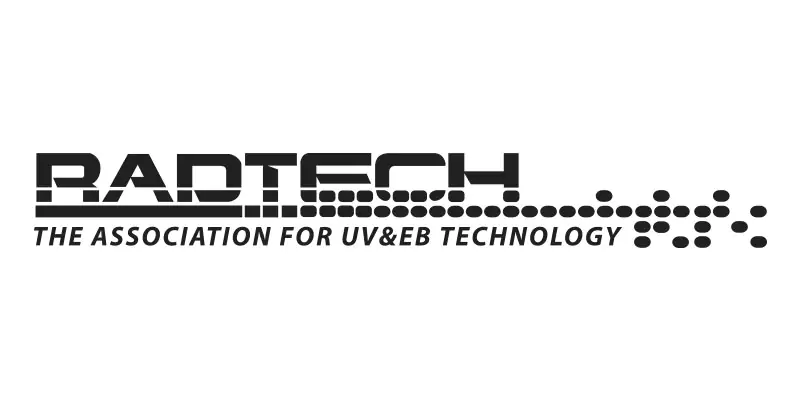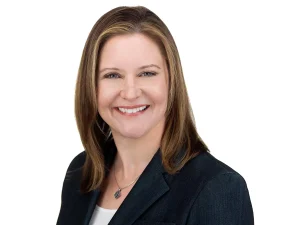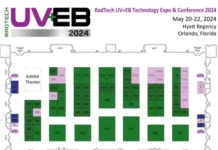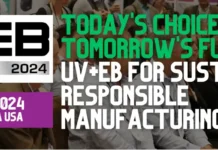By RadTech International North America
Register Now for ‘Early Bird’ Pricing for RadTech UV+EB 2020 Conference
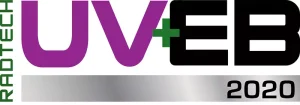 The RadTech UV+EB 2020 Conference will be held March 8 through 11, 2020, at the Disney Coronado Springs Resort in Orlando, Florida. For the first time, the conference will be co-located with the 2020 IUVA Americas Conference. The early rate offers members of both RadTech and IUVA – as well as nonmembers – a substantial discount off the general registration or on-site rate. General registration will be available Dec. 21, 2019, through February 21, 2020. Registration at a higher rate will be available thereafter and on-site through the conference. Single-day registration also is available online or on site.
The RadTech UV+EB 2020 Conference will be held March 8 through 11, 2020, at the Disney Coronado Springs Resort in Orlando, Florida. For the first time, the conference will be co-located with the 2020 IUVA Americas Conference. The early rate offers members of both RadTech and IUVA – as well as nonmembers – a substantial discount off the general registration or on-site rate. General registration will be available Dec. 21, 2019, through February 21, 2020. Registration at a higher rate will be available thereafter and on-site through the conference. Single-day registration also is available online or on site.
Full conference registration includes the following:
- Admission to all RadTech and IUVA conference sessions
- Copy of RadTech and IUVA conference proceedings via online link sent by email
- Admission to exhibition
- Continental breakfast
- Group luncheons each day
- Refreshment breaks
- Admission to receptions
- Conference and show directory
Online registration for the “early bird” rate for the RadTech UV+EB 2020 Conference is open through Dec. 20, 2019, at https://radtech2020.com/registration.
Register Now for Dec. 5 Webinar: UV LED for Wide Web, Flex Packaging
![]() RadTech will present an introduction to UV LED technology (systems, coatings, adhesives) and its impact on migration, sustainability and a converter’s bottom line in an upcoming webinar, set for 1 pm CT Dec. 5, 2019.
RadTech will present an introduction to UV LED technology (systems, coatings, adhesives) and its impact on migration, sustainability and a converter’s bottom line in an upcoming webinar, set for 1 pm CT Dec. 5, 2019.
UV LED technology is the dominant curing source in various industry segments including digital inkjet printing and spot cure adhesives. In other markets, such as narrow web label, UV LED technology is an increasingly viable option for both new presses and retrofits and has been steadily gaining market share.
Presenters Joe Spinnato of Ashland and Jennifer Heathcote of Eminence UV are subject matter experts in UV LED-curable materials and curing systems. Topics to be covered include an introduction to UV LED curing technology, industry market trends, migration and sustainability needs, wide web UV LED coating and adhesive applications, and product development plans. The webinar is focused to assist converters as they pursue improved business results and is intended for those new to UV LED technology and its application in mid and wide web flexible packaging.
For additional details and to register, visit www.radtech.org.
RadTech/TAGA Poster Contest Deadline Approaching
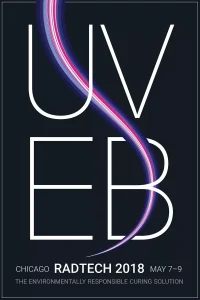 RadTech and The Technical Association for the Graphic Arts (TAGA) are partnering again on the UV+EB Technology Student Poster Design Competition, which offers students cash prizes for creative poster designs. Interested graphic arts and design students need not have experience in UV+EB technology, and are encouraged to learn more and sign up at www.taga.org/radtech.
RadTech and The Technical Association for the Graphic Arts (TAGA) are partnering again on the UV+EB Technology Student Poster Design Competition, which offers students cash prizes for creative poster designs. Interested graphic arts and design students need not have experience in UV+EB technology, and are encouraged to learn more and sign up at www.taga.org/radtech.
Entries must be submitted to RadTech by Dec. 31, 2019. RadTech will display and celebrate winning entries at the 2020 RadTech Conference at Disney’s Coronado Springs Resort in Orlando, Florida, March 8 through 11, 2020. The winning design also may be featured as the cover artwork for a future issue of UV+EB Technology magazine.
RadTech Announces Contract with Heathcote, Eminence UV, LLC
RadTech has contracted with Jennifer Heathcote of Eminence UV, LLC, to provide the organization with applications expertise as the technology continues to enable new products and manufacturing methods. Heathcote brings 20 years of industry experience in applications engineering, sales, business development and general management roles.
“Jennifer has proven herself to be a leading authority on our technology and its use across a broad range of industrial applications,” said RadTech President Eileen Weber, of allnex. “Her experience spans a wide range of applications, including digital and analog printing, structural bonding adhesive and industrial coatings.”
Heathcote earned a degree in mechanical engineering from Purdue University and an MBA from the Fisher College of Business at The Ohio State University.
California Senate Resolution Recognizes UV/EB Technology and RadTech

The California State Senate has adopted a resolution recognizing the benefits of ultraviolet and electron beam technologies, as well as the contributions of RadTech: The Association for UV+EB Technology. The resolution was spearheaded by Sen. Mike Morrell (R), who represents California’s 23rd Senate District, covering portions of Riverside, San Bernardino and Los Angeles counties.
“This California State Senate resolution will encourage adoption of pollution prevention technologies while retaining manufacturing jobs in California,” said Rita Loof, RadTech’s director of environmental affairs. “UV and EB technology already has been recognized on various occasions by the South Coast Air Quality Management District (SCAQMD) and the City of Los Angeles, and we welcome the statewide recognition.”
The resolution recognizes UV/EB technology as pollution-prevention processes that produce little to no harmful emissions. The nature of the process is such that virtually no volatile organic compounds (VOCs) or hazardous air pollutants (HAPs) are generated. Additionally, UV/EB processes do not produce combustion contaminants, such as nitrogen oxides, sulfur dioxide or greenhouse gases, which are heavily regulated in California. The SCAQMD and City of Los Angeles previously presented RadTech with Clean Air Awards for Advancement in Air Pollution Control Technology. The SCAQMD also recently deemed UV/EB technology as a “control strategy” in its Air Quality Management Plan. The technology is listed as a Best Available Control Technology, which exempts it from many SCAQMD regulations.
RadTech Rewards, Encourages Interest in STEM
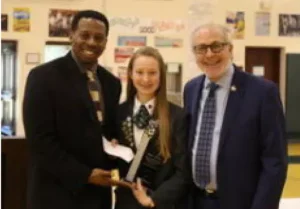 RadTech International North America annually hosts the Emerging Technology Awards and the RadLaunch Tech Accelerator – opportunities for innovators in the UV/EB technology development space to be recognized and connected with industry resources. In 2018, a young inventor was recognized as the first RadLaunch “Future Scientist” when the competition committee learned of her invention: an Air/Water Purification Ion-Exchange Resin & UVC Filtration System. As the deadlines for this year’s Emerging Technology Awards and RadLaunch Tech Accelerator approach (see page 50), UV+EB Technology reached out to Mealy Cronin to learn more about her interest in science and technology.
RadTech International North America annually hosts the Emerging Technology Awards and the RadLaunch Tech Accelerator – opportunities for innovators in the UV/EB technology development space to be recognized and connected with industry resources. In 2018, a young inventor was recognized as the first RadLaunch “Future Scientist” when the competition committee learned of her invention: an Air/Water Purification Ion-Exchange Resin & UVC Filtration System. As the deadlines for this year’s Emerging Technology Awards and RadLaunch Tech Accelerator approach (see page 50), UV+EB Technology reached out to Mealy Cronin to learn more about her interest in science and technology.
Have you always had an interest in science and technology?
Cronin: In second grade we passed the science and technology magnet school near my house. My mom told me that kids who loved math and science learned about, and invented, all sorts of amazing things there. That made an impact on me and, from that point on, I was hooked. I read anything STEM related that I could get my hands on. In seventh grade, I even started a YouTube channel aimed at inspiring girls to love STEM as much as I do.
Who encouraged and inspired you?
Cronin: I credit my 5th and 6th grade science teacher with inspiring my love of all things STEM related. He encouraged me to keep asking questions and to delve more deeply into the answers I received. He felt any idea could be turned into a science experiment, and any experiment could lead to an invention.
Why did you invent the air/water purification system?
Cronin: The movie Waterworld began after global warming caused the ice caps to melt, so the oceans rose to cover all seven continents. Since then, I have worried about the effects of global warming and I wanted to help air quality and reduce carbon gases. I was talking to my grandfather about the concept of ionic exchange, which I learned about in school, and it turned out he was working on a UVC project to help eliminate viruses and bacteria. I wondered if it was possible to use ion exchange and UVC, in addition to filters and giant turbines, to clean air and water.
How is your invention different from other systems?
Cronin: What is different is that my approach uses the combination of UVC light (254nm), ionic exchange, filtered activated charcoal and HEPA filters, rather than any one singular approach to filter air and water. The UVC interference of viral and bacteria DNA, in combination with the other elements, elevates the ability to purify the air and water.
What did the development process look like?
Cronin: First, I made an outline of the concept and sketched what I thought it would look like and what each part would be responsible for. I looked at off-the-shelf products that resembled what I had in mind and which I could use for testing. Then after building several models, I began the testing process. Once I had the data to prove my concept worked, I submitted a final non-provisional patent application to the United States Patent and Trademark Office.
What’s next?
Cronin: One idea I am particularly interested in involves the harnessing of alternate sources of energy for use in our everyday activities – but I am pretty busy with my studies. I am currently in 9th grade, a competitive figure skater and swimmer, and I also run on my school’s varsity cross country team.



